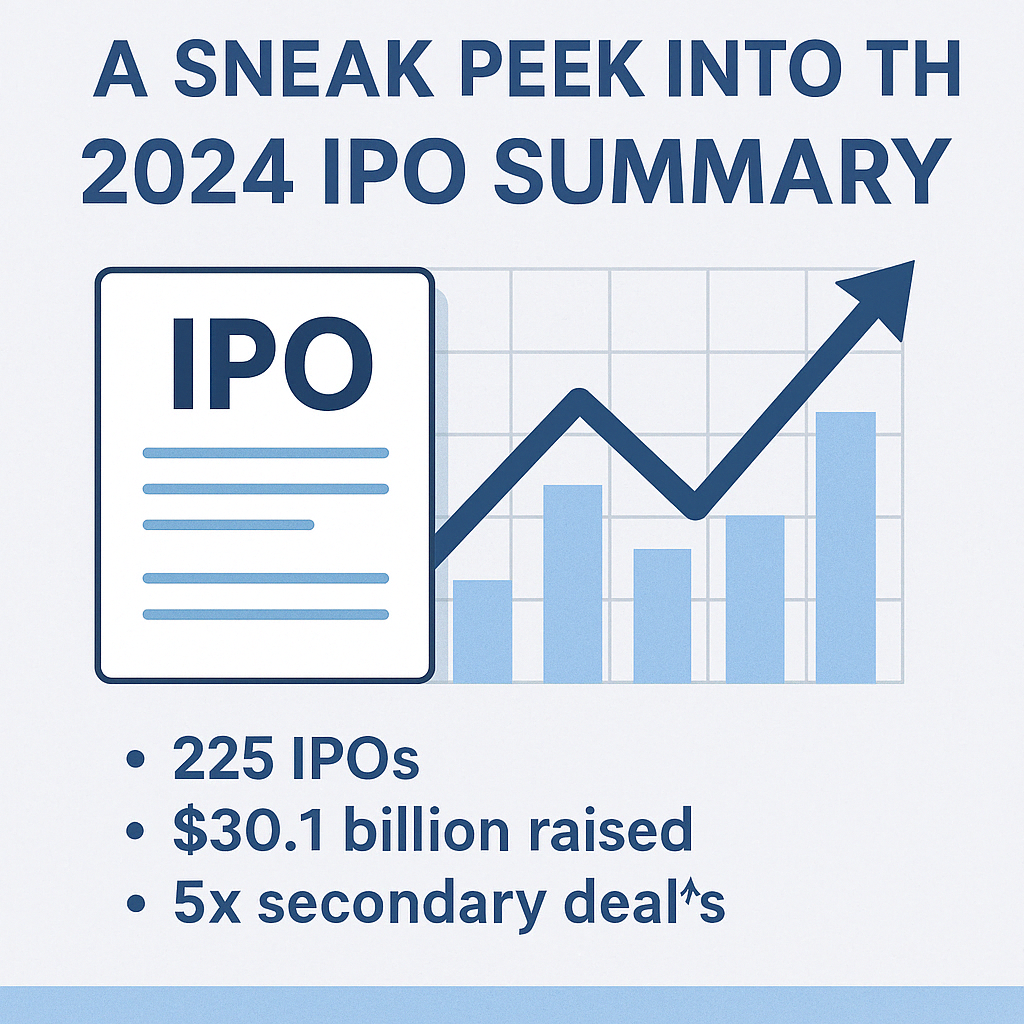
Dr Barry Jay Epstein, Accounting Expert at Epstein + Nach LLC
Earn-out agreements (“earn-outs”) are common features of business acquisitions, and indeed may be necessary in bringing a proposed transaction to fruition. Particularly when the sought-after price is predicated on the business’ very recent record of success, the buyer, naturally being less confident of the enterprise’s longer-term performance potential, may demand that a significant portion of the agreed-upon price be contingent on that performance, at least in the near term. Typically, such contingent payouts will be dependent upon results obtained over a three to five years post-transaction date.
An earn-out may be a simple function of all defined future (e.g., next three years’) earnings, a portion of earnings over a specified threshold amount, or a (possibly sliding) percentage of some combination of factors, such as several years’ earnings plus the order backlog as of the final determination date. Unique attributes affecting the entity’s industry (e.g., cyclicality) may also be taken into account in such arrangements, although in practice most are structured without such exotic refinements.
The terms of the earn-out may or may not require that the seller remain actively involved, and the seller may be motivated to do so if the final selling price is dependent upon his/her ability to contribute to the entity’s future profitability. This may be desirable when the selling party has strong relationships with customers, vendors, or employees. In some situations, the buyer may use the earn-out requirement as a lever to accomplish its real objective, namely, a skills transfer from seller to buyer. In other instances, such as cutting-edge and high technology businesses lacking a meaningful track record despite bright expectations, the seller may want the earn-out as the only practical means of capturing a high selling price, predicated on the expectation that the business will in fact “take off” within the contractual earn-out period, notwithstanding prior experience.
While earn-outs are common, a surprisingly large fraction of such arrangements end in acrimony and, not infrequently, litigation. Often, the root cause of the later disputes lies not with the actual economic achievements of the business, but with lack of precision in the terms of the agreement, such that even reasonable persons will legitimately disagree on how future earnings (or other measures) are to be computed for purposes of determining the payments due to the sellers. In a subset of these, one or the other party will be seeking to exploit language that was accidentally or intentionally left vague, and which had remained undetected by the counter-party until the disputes ultimately arise.
Mechanics of Earn-Out Agreements
The actual mechanics of earn-outs are quite basic, and there are many sources of guidance on how these can be structured. In general, some fraction of the transaction price is contingent upon future performance, with some upside potential for the seller included as an incentive, but with this usually capped at some defined amount. For example, if the informally agreed-upon transaction price was $5 million, but the buyer was reluctant and the seller was very confident of future success, the final arrangements might call for an immediate payment of $3 million, plus later payments of 30% of pre-tax earnings over the following three years, up to total earnings of $10 million. This offers the sellers the potential for earn-out payments of up to $3 million, for a total transaction price of $6 million, or 20% more than the originally agreed-upon selling price. Even after considering the time value of money, this may be an attractive premium for the seller, ensuring maximum efforts to produce results and, as a by-product, give the buyer the extended opportunity to master the skills possessed by the former owners.
The most basic issue in devising earn-outs pertains to how future profitability is to be measured. Commonly, the agreement will call for measurement in conformity with generally accepted accounting principles (e.g., with IFRS or U.S. GAAP), and often there will be an audit requirement, such that the basis for the earn-out will have to be attested to by an independent accounting firm.
Alternatively (and less likely to become the subject of a dispute), earn-outs can be predicated upon cash flows generated by the business. Even here, however, there is room for manipulation: for example, outstanding bills (accounts payable) can be accelerated in order to depress cash flow, and customer receivables can be less aggressively pursued for collection, for the same reason, particularly at the final measurement date.
The following sections will discuss, respectively, the legal and the accounting issues most commonly encountered in earn-out disputes, in the hope that future transactions can be structured – and contract language can be written – to minimize these costly and distracting disagreements.
Legal Issues in Earn-Out Arrangements
Many details must be spelled out in the acquisition agreement to protect both the buyer and (especially) the seller. There needs to be both a beginning and ending date to the seller’s eligibility to make their earn-out. The length of that period should be reasonably sufficient for the seller to reach the performance objective and allow the buyer to achieve the anticipated return on investment. A longer-term agreement means that the seller and buyer are going to have a long-term relationship. A buyer needs to ask himself if this is something he wishes to entertain – in general, this won’t be desired.
When the performance target is hit, the earn-out payment becomes “earned” and payable subject to the earn-out formula. The earn-out formula can include a:
Lump-sum amount.
Percentage of the performance target.
Minimum amount plus a percentage of the performance target.
Ceiling or cap on the amount earned during any one period.
Ceiling or cap of the total amount earned over the term of the agreement.
The earn-out formula sets forth the conditions and amount of the earn-out for any given period of time. However, the fact that a seller has successfully achieved its earn-out for a given period does not necessarily imply that a payment will be distributed at that point. The agreement will guide the timing of payments and the manner in which specific payments are calculated.
One formula might be employed for determining the amount of an earn-out that has been earned and another might direct how the earn-out is to be distributed. Depending upon the type of earn-out agreement, payments can be made monthly, quarterly, or annually. In addition, payments can be made at the end of the agreement’s term along with periodic payments. The information required to calculate the earn-out based upon the formula needs to be available. Therefore, the buyer will need a reasonable amount of time to gather the necessary data. An earn-out agreement can provide for simple periodic payments without recourse. An alternative option is to create an earn-out pool, which is a more or less cumulative account showing the amounts earned, distributions in a given period and a running total of payments. For additional protection, a buyer may negotiate a right to set-off losses against any future earn-out payments. In this way, losses in one year can be used to reduce the balance of the pool and the net amount paid to the seller over the term of the earn-out. (This right to set-off can also apply to deficiencies or breach of the agreement by the seller.)
Accounting Issues in Earn-Out Arrangements
IFRS and U.S. GAAP are the most commonly specified measurement principles for determining the amount of future contingent payouts to the sellers. IFRS or U.S. GAAP, of course, are not the only metrics that can be agreed to, and there are many non-GAAP measures, including the very popular EBITDA (earnings before interest, taxes, depreciation and amortization). However, most contracting parties believe that, by specifying IFRS or U.S. GAAP, future disputes will be obviated. This is far from the actual case, however. A surprisingly large number of disagreements develop even when IFRS or U.S. GAAP is the agreed-upon metric.
U.S. GAAP denotes the common parcel of standards and procedures that have evolved over the decades, mostly as promulgated and codified by standard setting bodies, but also including practices which, by dint of wide and longstanding usage — and because superseding authoritative guidelines have not appeared — have become “generally accepted.” (IFRS is less dependent or accepting of common, uncodified practices, but it does countenance that other recognized standards may be invoked in areas that IFRS has yet to address with definitive requirements.) Before mid-2009, there were multiple sources of U.S GAAP, arranged in a formal hierarchy, and this often proved challenging for laypersons (and even trained accountants) to navigate. Effective July 1, 2009, all the then-existing literature was withdrawn, and was replaced by a unified “codification,” which has proven to be, in perhaps somewhat different ways, also difficult to navigate, particularly during these early “learning curve” years.
Codified or not, the bodies of both IFRS and U.S. GAAP is large and constantly growing, and this dynamic aspect of the standards is often overlooked in the drafting of a wide range of contractual agreements, including earn-outs. Under the new U.S. codification scheme, changes to GAAP are incorporated not as freestanding new standards, but as edits, additions, deletions or replacements of specific topics, sections, and paragraphs in the FASB Accounting Standards Codification. IFRS, too, is constantly evolving and receiving new interpretive guidance from the standard setter and from academicians and others. If anything, this has made it even more important to consider consulting a IFRS or U.S. GAAP expert when drafting complex contractual provisions, including earn-outs, that rely on ongoing measures derived from GAAP-basis financial statements.
An immediate concern for parties to earn-outs must be the question of whether IFRS or U.S. GAAP measurements of operating results over the defined time horizon will be based on GAAP as it exists in the forthcoming periods of measurement, which may well change over even a short three year period, or alternatively will be based on IFRS or U.S. GAAP as it existed when the agreement was executed. The latter approach, often referred to as “frozen GAAP,” eliminates the risk that one party or the other will benefit in ways not anticipated by the contracting parties, to the other party’s detriment. The negative aspect of such arrangements is that, effectively, “two sets of books” must be maintained, since general purpose financial reporting will have be conducted using then-current IFRS or U.S. GAAP, which may evolve substantially over the term of the agreement.
If the earn-out is for longer than a relatively short period, it may become increasingly challenging to competently calculate the basis upon which the earn-out payments are to be made. To guard against the effects of this, agreements calling for “frozen GAAP” measures should include, in an appendix, a fairly detailed and inclusive listing of IFRS or U.S. GAAP requirements salient to the entity, or alternatively cite a reference work or codification that captures them as of that point in time, which the parties agree is to be complied with throughout the earn-out period, ignoring any changes to promulgated IFRS or U.S. GAAP.
The risk of changes to IFRS or U.S. GAAP should not be underappreciated. Major changes are being promised for such matters as accounting for leases, accounting for financial instruments, and revenue recognition, and scores of less pervasive, but still possibly important, changes are being debated – and a changeover to International Financial Reporting Standards (IFRS), long-debated, remains a real possibility within the next few years.
In addition to the naturally occurring, albeit unpredictably timed, evolution of IFRS and U.S. GAAP, several other issues should at least be contemplated by parties who are tempted, or required, to employ earn-outs in business acquisitions, or by their counsel. These other concerns include the handling of voluntary changes in IFRS or U.S. GAAP made by the earn-out entity; revisions from non-GAAP accounting to full GAAP compliance; and corrections of errors subsequently discovered.
Regarding the first of these, it often is not fully appreciated that while the ranges of acceptable alternative methods of accounting have narrowed considerably over the past few decades, there are still many legitimate choices that can be made by reporting entities without departing from IFRS or U.S. GAAP. If the buyer adopts alternative IFRS or U.S. GAAP that affects earn-out measurements, and this has not been anticipated in the language of the agreement, a dispute between the parties is almost inevitable.
For example, under U.S. GAAP, inventories may be priced using various methods, including first-in, first-out (“FIFO”), last-in, first-out (“LIFO”), and average assumptions. These “cost flow” assumptions may be made without regard to the actual physical flow of goods. If a selling party had previously employed FIFO costing, and the buyer adopts LIFO, the effect will generally (assuming even moderately rising prices) be to reduce reported profits. This would, ceteris paribus, work to the detriment of the seller, and the benefit of the buyer, and not constitute a GAAP departure. (IFRS also permits alternative costing strategies, although LIFO is no longer permitted under that regime.)
Another example: depreciation may be computed using either straight-line or accelerated methods, with the latter depressing reported profitability over the earlier years of the assets’ lives (while increasing profits in latter years). For a growing business that is constantly adding new plant and equipment, accelerated depreciation methods will result in lower reported earnings in most or all years. Since earn-outs normally endure for only three to five years, a change in accounting to profit-depressing accelerated depreciation would almost certainly reduce contingent payments to the sellers, again without departing from IFRS or U.S. GAAP.
IFRS and U.S. GAAP changes can be more subtle, also. For example, accrual accounting, demanded by GAAP, requires that customer receivables be valued at “net realizable value,” which will often be less than the gross amounts owed, due to historically-shown expectations regarding uncollectible accounts (bad debts), as well as merchandise returns and other allowances. As to the necessary amount of bad debt reserves, IFRS and U.S. GAAP permit a range of methods to be employed, such as percentage of sales and aging of the receivables. While these specific methods should, over time, result in very similar results, in the short term these will not be identical, although both are IFRS and U.S. GAAP compliant approaches.
The risk of such manipulative tactics being undertaken by buyers is most often addressed by inserting the requirement that IFRS or U.S. GAAP be “applied consistently” with earlier years. Thus, if a U.S. GAAP-reporting seller had been employing FIFO costing, the seller would be constrained from changing this to LIFO costing until the earn-out period elapses (or, alternatively, a side computation would be required of the earn-out basis if changes to GAAP were effected).
Surprisingly, in many cases this simple preventative step is overlooked. If the buyer then adopts other, but acceptable, IFRS or U.S. GAAP methods, a dispute is almost a foregone conclusion. If the newly adopted methods for the acquired operation mirror IFRS or U.S. GAAP previously applied by the buyer for its other, ongoing operations, it may be difficult to prevail with a claim against that entity, since its argument that it was consistently applying its IFRS or U.S. GAAP accounting methods will have a good deal of face validity.
Changes from IFRS or U.S. GAAP-deviant methods to IFRS or U.S. GAAP-compliant ones also occur. In some instances, the accounting applied by the seller had not fully complied with IFRS or U.S. GAAP, perhaps due to oversight or error. In such a circumstance, even a provision in the agreement calling on the buyer to apply IFRS or U.S. GAAP consistently may prove problematic, since consistent application of existing accounting would not be IFRS or U.S. GAAP, and a change to IFRS or U.S. GAAP would breach the consistency requirement. For example, many entities depreciate long-lived assets over lives as set forth in the U.S. Internal Revenue Code (and tax laws of many other nations), which often do not correspond to actual estimated economic lives. (The tax lives are often shorter, but in some fact situations economic lives may be less.) IFRS and U.S. GAAP require depreciation over the expected economic lives of the assets, adjusted when estimates change. If the seller had been utilizing “tax lives” and the earn-out calls for “IFRS or U.S. GAAP consistently applied,” the buyer must either adopt IFRS or U.S. GAAP, thereby departing from past practice, or continue with non- IFRS or U.S. GAAP accounting (at least for the purpose of computing the earn-out).
This risk underscores the need for effective “due diligence” before the acquisition is finalized, including a detailed inventory of accounting methods being applied or misapplied by the seller. Ideally, the buyer will identify all non- IFRS or U.S. GAAP methods used by the seller, and explicitly set forth the prescribed treatment post-transaction, which may be either consistent application of the anomalous practices, or adoption of IFRS or U.S. GAAP procedures. If this is to be done, it would serve both parties’ interests if one or more historical periods were restated, on a pro forma basis, so that the negotiated price will reflect the entity’s real economic performance potential, measured in conformity with IFRS or U.S. GAAP as it is to be defined for earn-out computation purposes.
Corrections of accounting errors discovered after the transaction, but before the earn-out period expires, pose another risk to the smooth execution of earn-out arrangements. Under IFRS or U.S. GAAP, errors are defined as essentially clerical phenomena, i.e., the over-looking of facts extant at the time the earlier-period financial statements were prepared. Errors are corrected by restating the earlier periods’ financial statements, in contrast to changes in accounting estimates, which are to be handled prospectively. For example, if it is discovered in, say, the first year of the three-year earn-out that the estimated useful lives of depreciable plant assets had historically been exaggerated, this would be deemed an accounting error (if facts known at the time should have resulted in a proper estimate in earlier years), and the prior period statements would be restated. On the other hand, if changes in technology during the earn-out period render the useful lives shorter than hoped-for, this is to be accounted for as a change in estimate, not a as a correction of an error.
If correcting the error results in changing the pre-transaction date earnings of the operation acquired, this may well impact the earn-out agreement (and could raise other contractual issues, as well, if the price was a multiple of earnings). In many such arrangements, the amount of earn-out payments is conditioned on a defined threshold being exceeded, and this threshold will often be the level of earnings in earlier years.
For example, the earn-outs might be 30% of pre-tax income that exceeds 110% of the average of earnings over the two years preceding the sale. If a prior period adjustment is made to restate those earnings, this could be interpreted as moving the goal posts for earn-out computation purposes – an assertion that likely would be challenged by the counter-party, if it adversely affects it. Ideally, the earn-out agreement should be explicit as to how such corrections will be dealt with for computational purposes, regardless of the IFRS or U.S. GAAP requirements.
Changes in accounting estimates should also be addressed, if the risk of disputes is to be mitigated. For example, if the buyer revises useful lives of plant assets downward, or estimates other items, such as necessary inventory reserves for non-salable merchandise, upward, these changes will adversely impact earnings during the earn-out period. While such changes in estimate may be entirely warranted, they will likely still come as a surprise to the seller, and a dispute may well erupt. The seller’s interest would be best protected if the earn-out states that the buyer, after due diligence, accepts the accounting methods and estimates employed by the seller and agrees to continue these through the earn-out period. This would essentially limit the seller to making a claim of fraud against the seller, if it is later discovered that such methods or estimates were grossly distorted.
Legally speaking, and notwithstanding the precautions taken, the fact remains that sellers enter into earn-outs at substantial risk. The buyer controls the subsequent accounting, and even an audit requirement may not guarantee that creative or aggressive accounting manipulations might not be undertaken in an effort to deny the seller the full earn-out rewards to which it is entitled.
The author has served an accounting expert in several cases where just this has occurred: the independent auditors, perhaps having become too close to the client and possibly suffering from some loss of objectivity (a cardinal sin under auditing and ethical standards), have acquiesced to the client’s accounting machinations which should have been clearly seen as attempts to evade obligations to the sellers of acquired businesses. With these experiences in mind, the recommendation is that earn-out agreements have specific remedies for such concerns, perhaps even naming a truly independent accounting firm as the final arbiter for any accounting related disputes.
In one recent case in which the author was involved, the buyer of a large industrial complex made a determination, during the earn-out period, that the assets had become “impaired,” which is a term of art under U.S. GAAP. The effect of this determination was to fully offset the amount due under the agreement. In fact, an elaborate sequence of transactions, some of which produced large gains for the entity, had been recorded in a creative manner, and then aggressive assumptions were made in applying the rather complex requirements of the accounting standard that addresses possible asset impairments.
The end result was to find impairment where none actually existed, and the acquiring entity’s auditors did not object, presumably because enough information was incorporated in the financial statement footnotes to enable an astute financial analyst to perceive the truth. However, since the earn-out was predicated (as ususual) on reported earnings – and not on footnote disclosures – the buyer and its auditors were thus able to “have it both ways.” Had the agreement named a qualified arbitrator for accounting disputes, this possibly would have served dissuade these parties from attempting such a maneuver. In the absence of such a provision, an expensive litigation action was needed to resolve this matter.
A final note: While the foregoing discussion was predicated on the assumption that the earn-out will be defined in terms of IFRS or U.S. GAAP, the same advice applies to arrangements calling for measurements on the tax basis or the cash basis (so called “other comprehensive bases of accounting,” or “OCBOA”), or on a statutory basis of accounting (e.g., for insurance companies). Whether IFRS or U.S. GAAP or some other defined basis of accounting is specified for earn-out computation purposes, the more explicit the agreement can be made, regarding such matters as changes in accounting principles, corrections of errors, and other accounting- or reporting-related matters, the less likely will be the occurrence of subsequent disputes.
Negotiating complex business acquisitions and other transactions may call upon a range of skills, potentially including sophisticated economic analyses, mathematics, statistics, and game theory, in the attempt to cope with individual behaviors in the face of unknown variables. The prepared and educated practitioner can minimize the risk of future misunderstandings and litigation by bringing a complement of skills to bear. Inclusion of IFRS or U.S. GAAP analyses can improve the likelihood of successful outcomes.
Related Posts
Singapore – Happy 60th Birthday!
Proud to be part of Singapore’s journey of excellence. Paul Wan & Co wishes everyone…
🎅🎄 Merry Christmas! 🎄🎅
Wishing you all the joy, peace, and love this festive season brings. ✨ #Christmas #paulwanco…
✨ Happy Deepavali! ✨
Wishing you and your loved ones a joyous and prosperous festival of lights! May this…
Paul Wan & Co Group Bonding Event Da Nang 2024
Paul Wan & Co group celebrated our 38th anniversary with a big bang retreat in…











